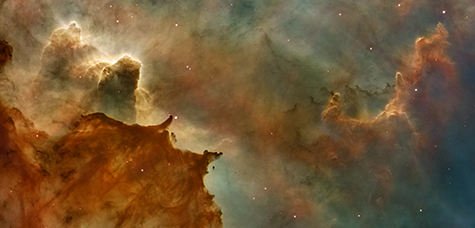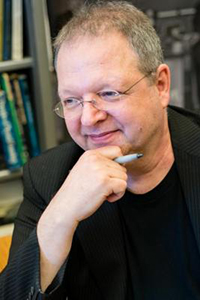
Thomas J. Bernatowicz, PhD, professor of physics in Arts & Sciences, will deliver the McDonnell Distinguished Lecture at 7 p.m. Wednesday, April 10, in Room 105, Steinberg Hall, at Washington University in St. Louis.
The St. Louis community is cordially invited to the lecture, which is sponsored by the McDonnell Center for the Space Sciences.
Bernatowicz will discuss what cosmic dust carried to Earth by meteorites has revealed about the creation of the elements by stars and supernovae.
“About 4.6 billion years ago the solar system condensed from an interstellar cloud infused with dust and gas from winds emanating from dying stars,” Bernatowicz said. “In the very hot and harsh environment that prevailed during the early epochs of the condensation, most of these dust grains were destroyed, but some survived and were preserved in the matrix of primitive meteorites, which occasionally fall to the Earth.”
“In this presentation I will show how stardust grains in meteorites can be identified in the laboratory, and how the results of such studies lead to important new insights about the creation of the elements by stars and supernovae.”

Bernatowicz, who received his undergraduate degree from Edinboro University of Pennsylvania in 1974 and his PhD from Washington University in 1980, is passionately devoted to quality undergraduate education in physics, particularly at the introductory level.
In 2004, he introduced a calculus-based physics sequence, based on the innovative textbook Six Ideas that Shaped Physics and the active learning methods of Thomas A. Moore of Pomona College that train students to think and address problems the way physicists do.
Bernatowicz won the inaugural David Hadas Teaching Award in 2009, in recognition of “his commitment and excellence in teaching first-year undergraduate students.”
His research has addressed a wide variety of problems in planetary geochemistry and geophysics, surface physics, and experimental nuclear physics, isotope geochemistry and astrophysics.
Bernatowicz also will deliver a colloquium, titled “Constraints on Grain Formation Around Carbon Stars From Laboratory Studies of Presolar Graphite,” as part of the lecture series, at 4:15 p.m. Thursday, April 11, in Room 201, Crow Hall. The colloquium is also free and open to the public.
The McDonnell Center, which was established in 1975 through a gift from the aerospace pioneer James S. McDonnell, is a consortium of WUSTL faculty, research staff and students coming primarily from the departments of Earth and Planetary Sciences and Physics, both in Arts & Sciences, who are working on the cutting edge of space sciences research.
For more information on the talks, contact Trecia Stumbaugh at trecia@wustl.edu or (314) 935-5332.